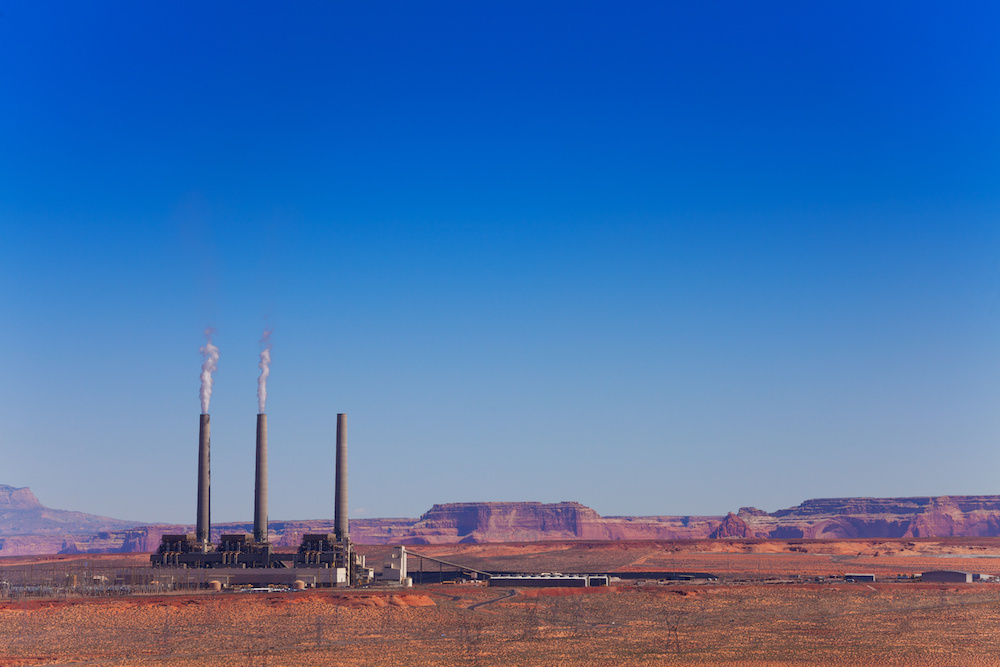The nation’s energy outlook has evolved rapidly over the course of the last decade.
The United States has emerged as one of the world’s leading producers of natural gas, leading to a glut of supply that has – for now – pressed its price downward.
The implementation of former President Obama’s regulatory agenda, meanwhile, mandated the installation of emissions control mechanisms that pressed the price of coal – for now – upward.
These dynamics have combined to create considerable challenges for the coal sector. In the Southwest, and particularly here in Arizona, the impact of those challenges can be seen in the ongoing discussion over the future of the Navajo Generating Station – the region’s largest coal-fired power plant.
In operation for decades, the Navajo Generating Station accounts for a vast segment of Arizona’s power generating capacity. Combined with the nearby Kayenta Mine, the plant provides more than 800 jobs, The vast majority of these jobs are held by members of the Hopi and Navajo tribal communities – some of the most economically distressed communities in the entire nation. It contributes billions to Arizona’s gross state product, supports thousands of indirect jobs, and generates a significant portion of the revenue utilized to fund the Hopi and Navajo tribal governments.
Perhaps most importantly, the Navajo Generating Station provides reliable, affordable power.
Despite these facts, the owners of the Navajo Generating Station voted this winter to decommission the plant in 2019. They cited the same dynamics that have been cited many times upon closure of coal power infrastructure: economic concerns driven by regulatory pressure and cheap natural gas.
Salt River Project, the plant’s managing owner, originally explored immediate decommissioning, but voted to continue operations through 2019 while an effort is made to find a new ownership structure that could put the plant in position to continue to deliver power to Arizonans for another 20 years.
Keeping the Navajo Generating Station in operation beyond 2040 is important because it will protect jobs and drive economic opportunity. But even more than that, it’s important because the Navajo Generating Station is the most affordable and most reliable way to power the state of Arizona.
New analysis shows that the assumptions about economic viability that drove the decision to decommission the plant were flawed, failing to take into account important factors that will weigh on the future use of natural gas as an alternative baseload fuel source. The study finds that it will be almost $400 million cheaper to continue to operate Navajo Generating Station than it would be to replace it with natural gas or any other feedstock.
Economics are not the only justification for the plant’s continued operation. The new study also points to the importance of energy diversity to the state’s future, noting that decommissioning of the Navajo Generating Station would leave the state dangerously over-reliant on natural gas. Arizona imports almost all of its natural gas, and lacks the supply capacity to prepare for and guard against supply interruption or price fluctuation. Utility regulators have also expressed their concern about the impact of Navajo Generating Station’s closure on the state’s ability to maintain its energy diversity.
There is real hope that the plant’s life can be extended. The United States Department of the Interior has convened sessions in Washington, D.C. and Arizona to explore options for extended operations, and stakeholders are working to arrive at a solution that will save jobs and keep power flowing smoothly in Arizona and across the Southwest.
In the meantime, it is essential that the terms of a new lease be arrived at swiftly by the current owners – led by Salt River Project – and the Navajo. Negotiations have been underway since the winter vote on closure, but have not yet yielded agreement. The discussion surrounding the plant’s long-term future is critical, but the importance of finding a lease agreement cannot be overstated. Without it, the plant can’t even operate until 2019.
The right stakeholders are at the table, and the right solution for our energy future is within reach. Arizona, and the rest of the Southwest, now simply needs these stakeholders to work together in good faith to utilize the data at their disposal – including the new economic study – to secure the plant’s operation for decades to come.

